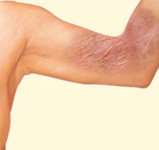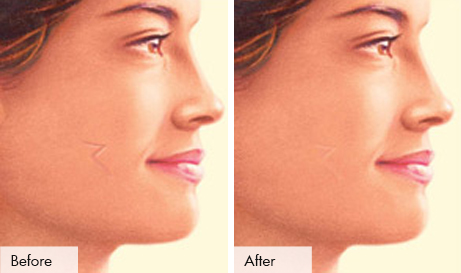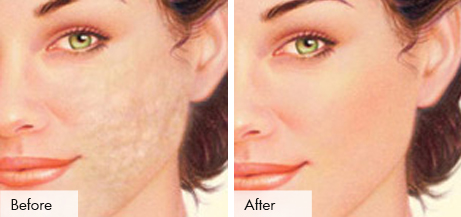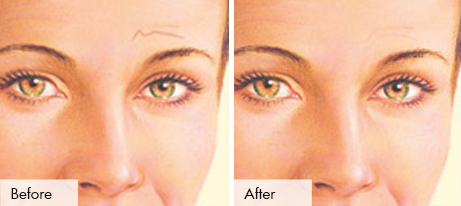Scar Revision
Scar revision refers to a variety of techniques which can help to narrow, fade or otherwise improve severe or unattractive scars. What is scar revision surgery?
Scar revision surgery is meant to minimize the scar so that it is more consistent with your surrounding skin tone and texture.
Scars are visible signs that remain after a wound has healed. They are unavoidable results of injury or surgery, and their development can be unpredictable. Poor healing may contribute to scars that are obvious, unsightly or disfiguring. Even a wound that heals well can result in a scar that affects your appearance. Scars may be raised or recessed, different in color or texture from surrounding healthy tissue or particularly noticeable due to their size, shape or location.
Your treatment options may vary based on the type and degree of scarring and can include:
- Simple topical treatments
- Minimally invasive procedures
- Surgical revision with advanced techniques in wound closure
Although scar revision can provide a more pleasing cosmetic result or improve a scar that has healed poorly, a scar cannot be completely erased.
What Is A Scar?
Scar revision is plastic surgery performed to improve the condition or appearance of a scar anywhere on your body. The different types of scars include:

Discoloration, surface irregularities and other more subtle scars can be cosmetically improved by surgery or other treatments recommended by Dr. Halem. These types of scars do not impair function or cause physical discomfort and include acne scars as well as scars resulting from minor injury and prior surgical incisions.

Hypertrophic scars are thick clusters of scar tissue that develop directly at a wound site. They are often raised, red and/or uncomfortable, and they may become wider over time. They can be hyperpigmented (darker in color) or hypopigmented (lighter in color).

Keloids are larger than hypertrophic scars. They can be painful or itchy, and may also pucker. They extend beyond the edges of an original wound or incision. Keloids can occur anywhere on your body, but they develop more commonly where there is little underlying fatty tissue, such as on the face, neck, ears, chest or shoulders.

Contractures are scars that restrict movement due to skin and underlying tissue that pull together during healing. They can occur when there is a large amount of tissue loss, such as after a burn. Contractures also can form where a wound crosses a joint, restricting movement of the fingers, elbows, knees or neck.
The type of scar you have will determine the appropriate techniques Dr. Halem will use to improve your scar.
Scar revision candidates
Scar revision is a highly individualized procedure and you should do it for yourself, not to fulfill someone else’s desires or to try to fit any sort of ideal image.
Scar revision can be performed on people of any age and is a good option for you if:
- You are bothered by a scar anywhere on your body
- You are physically healthy
- You do not smoke
- You have a positive outlook and realistic goals for your scar revision surgery
- You do not have active acne or other skin diseases in the area to be treated
Scar Revision Recovery
Progress and healing
The initial healing phase of a surgical scar revision may include localized swelling, discoloration or discomfort and may take 1 to 2 weeks. Healing will continue for several weeks and as the new scar heals it will slowly refine and fade. With dermabrasion, chemical peel or laser resurfacing, you will experience similar conditions at the treated area, in addition to overall sensitivity.
The results will be long-lasting
The final results of your scar revision surgery will be long-lasting, however it may take several months for your final results to become apparent and in some cases it may take a year for the new scar to fully heal and fade.
The practice of medicine and surgery is not an exact science. Although good results are expected, there is no guarantee, in some situations, it may not be possible to achieve optimal results with a single surgical procedure and another surgery may be necessary.
Step 1 –Anesthesia
Medications are administered for your comfort during the surgical procedures. Dr. Halem uses local anesthesia and the procedure is performed in her Manhattan office.
Step 2 – The treatment
The degree of improvement that can be achieved with scar revision will depend on the severity of your scarring, and the type, size and location of the scar. In some cases, a single technique may provide significant improvement. However, your plastic surgeon may recommend a combination of scar revision techniques to achieve the best results.
Topical treatments, such as gels, tapes or external compression, can help in wound closure and healing, or to reduce the ability of skin to produce irregular pigment. These products may be used to treat existing surface scars and discoloration, and to aid in healing of scar revision procedures.
Injectable treatments are often used to fill depressed or concave scars. Depending on the injectable substance used and your particular scar conditions, results may last from three months to several years. Therapy must be repeated to maintain results. One form of injection therapy uses steroidal-based compounds to reduce collagen formation and can alter the appearance, size and texture of raised scar tissue.

Surface treatments are most often used for cosmetic improvement of scars. These methods can soften surface irregularities and reduce uneven pigmentation. Surface treatments are a controlled means of either mechanically removing the top layers of skin or changing the nature of tissue. These treatment options include:
- Dermabrasion is a mechanical polishing of the skin.
- Laser or light therapy causes changes to the surface of the skin that allow new, healthy skin to form at the scar site.
- Chemical peel solutions penetrate the skin’s surface to soften irregularities in texture and color.
- Skin bleaching agents are medications applied topically to lighten the skin.

Step 3 – Sometimes for deeper scars an incision is needed to surgically remove the old scar.

Step 4 – Closing the incisions:
Some scars require layered closure. Layered closure is often used where excision extends to tissue below the skin surface or in areas with a high degree of movement. The first step, or layer, requires sub-dermal closure (below the skin surface) with absorbable or non-removable sutures. Layers of closure continue to build, concluding with closure of the remaining surface wound.
Advanced techniques in scar revision include complex flap closure to reposition a scar so that it is less conspicuous, or improve flexibility where contracture has restricted mobility.
Pharmaceutical tissue substitutes may be used if ample healthy tissue is not present for closure of a scar excision. This is more likely with revision of severe burn scars.
Scar revision surgery risks and safety information
The decision to have scar revision surgery is extremely personal and you’ll have to decide if the benefits will achieve your goals and if the risks and potential complications are acceptable. Dr. Halem will explain in detail the risks associated with surgery.
You will be asked to sign consent forms to ensure that you fully understand the procedure you will undergo, the alternatives and the most likely risks and potential complications.
Be sure to ask questions: It’s very important to ask Dr. Halem questions about your procedure. It’s natural to feel some anxiety, whether it’s excitement for your anticipated new look.
Where will my surgery be performed?
Scar revision surgery may be performed in Dr. Halem’s office.
When your procedure is finished, bandages or dressings may be applied to keep the surgical site clean.
You will be given specific instructions that may include: How to care for yourself following surgery, medications to apply or take orally to aid healing and reduce the risk of infection, and when to follow-up with Dr. Halem.
Feel free to call our office to schedule a consultation to review your questions on scar revision surgery.













